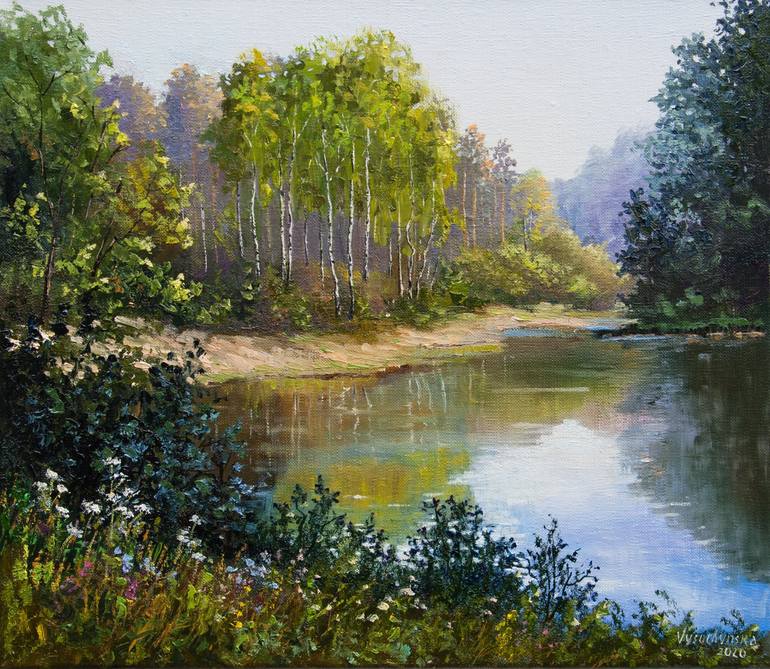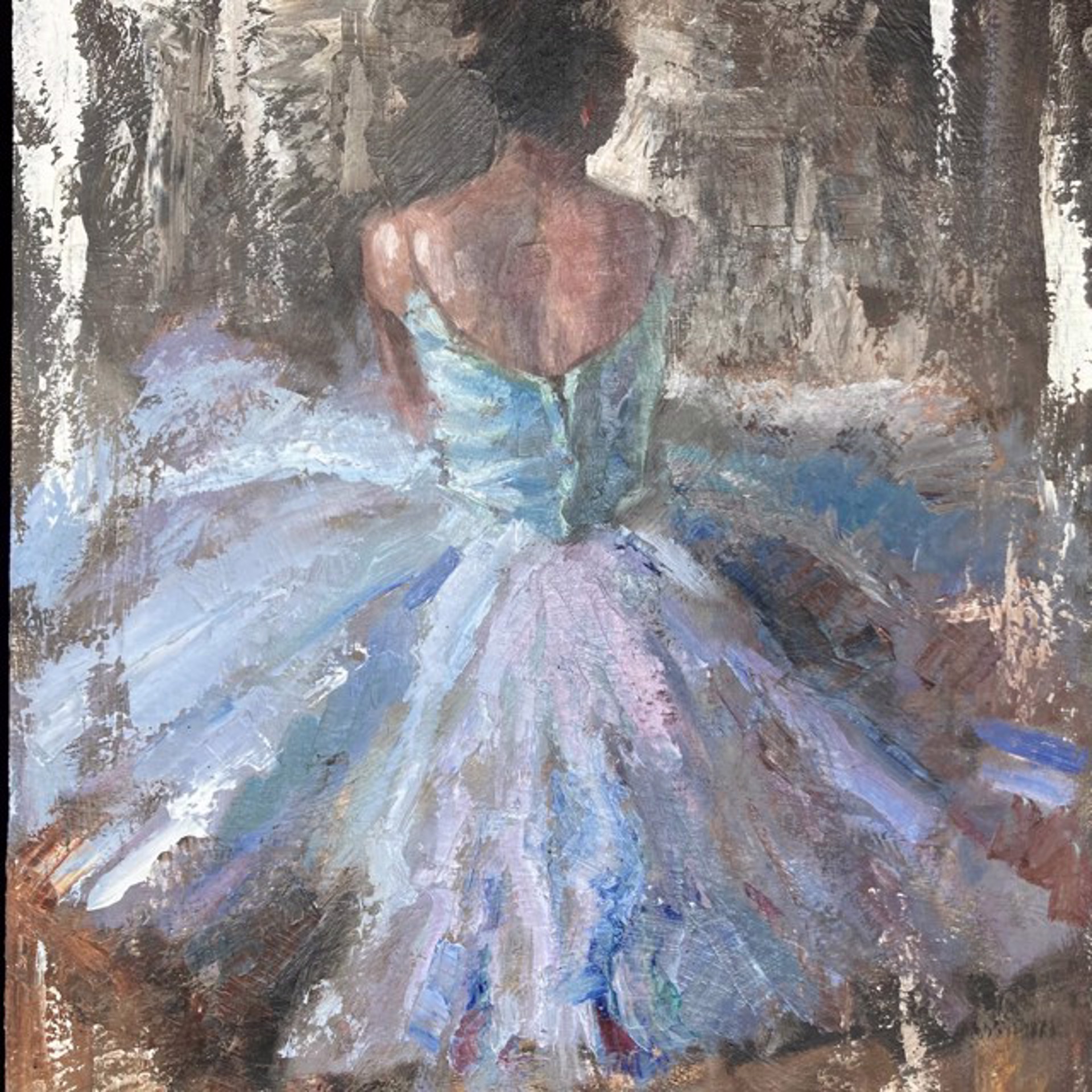Newly Curated Inventory of Oil Paintings for Sale
Newly Curated Inventory of Oil Paintings for Sale
Blog Article
Checking out All Concerning Oil Paints: A Guide to Comprehending Their Beauty and Value
Oil paints have mesmerized audiences for centuries, supplying a glimpse right into the artistic mastery of numerous ages. Their rich background is linked with innovative techniques and extensive emotional expression. Comprehending the materials and methods behind these art work can boost appreciation. In addition, the market for oil paintings offers chances for investors and enthusiasts alike. As one explores this interesting globe, the concern develops: what makes an oil painting absolutely useful?
The History of Oil Paint: A Trip With Time
Oil painting has roots that date back to old times, it truly grew during the Renaissance, when artists uncovered its convenience and rich color potential. Early instances can be mapped to the 7th century, with methods advancing especially throughout societies. The tool became noticeable in Northern Europe in the 15th century, particularly through the jobs of artists like Jan van Eyck, who pioneered its usage for thorough realistic look and vivid tones. This period marked a separation from tempera paints, enabling better deepness and appearance. As oil paint spread, it influenced numerous artists, resulting in work of arts by distinguished figures such as Leonardo da Vinci and Rembrandt. The medium's tradition continues, shaping the art world well into contemporary times.
Recognizing Oil Repaints: Products and Techniques
As artists check out the globe of oil paints, they come across a varied range of materials and strategies that define this tool. The main elements of oil paint include pigments, which offer color, and drying out oils, such as linseed, that bind the pigments and facilitate application. Various ingredients can modify the paint's appearance and drying out time, enhancing adaptability. Techniques like glazing, where clear layers are built up, and impasto, which involves applying thick paint, enable different aesthetic impacts. In addition, making use of brushes, combination blades, and also fingers can produce unique structures and finishes. Understanding these materials and techniques allows musicians to totally express their creativity and accomplish the wanted influence in their art work.
The Function of Color in Oil Paintings
Color plays a critical duty in oil paints, affecting both visual allure and psychological resonance. Understanding shade concept basics, consisting of the connections in between shades, can boost a musician's capacity to convey mood and atmosphere. In addition, understanding color mixing techniques permits higher depth and splendor in a painting's palette.

Color Theory Essential
Understanding shade theory is crucial for musicians functioning with oil paints, as it creates the structure for producing visually interesting and unified compositions. Shade concept encompasses the study of just how shades connect, the shade wheel, and the connections in between main, secondary, and tertiary shades. Musicians use corresponding shades to improve contrasts and produce prime focus, while comparable shades promote unity and cohesiveness within an item. Furthermore, the principles of warm and amazing shades influence the assumption of depth and space in a painting. Comprehending these principles permits musicians to adjust shade effectively, leading the customer's eye and connecting their designated message. Mastery of color theory eventually enriches a musician's capability to convey feelings and concepts through their job.
Psychological Effect of Color
The emotional influence of shade in oil paints plays a crucial duty in exactly how audiences view and attach with artwork. Colors stimulate particular sensations and state of minds, affecting the customer's mood. As an example, warm colors like reds and oranges can develop a feeling of warmth and power, while cool tones such as blues and greens often evoke calmness or self-questioning. Artists strategically pick shade schemes to improve narrative elements, directing the target market's psychological journey. The saturation and comparison of shades better enhance these results, drawing interest and creating focus. Inevitably, the interaction of colors in oil paintings not just enhances their aesthetic appeal however likewise functions as a powerful tool for emotional expression, enriching the customer's experience and interpretation.
Shade Combining Techniques
While lots of elements of oil paint contribute to the total make-up, mastering color blending techniques is necessary for achieving wanted effects and depth. Color blending can be approached through numerous techniques, consisting of the subtractive and additive processes. Additive mixing includes integrating colors of light, while subtractive blending counts on pigments, where colors blend to develop brand-new shades. Musicians frequently make use of a restricted combination to produce unified jobs, understanding the relationships in between primary, additional, and tertiary colors. Techniques such as glazing and scumbling additionally boost deepness and luminance. By skillfully blending shades, a musician can evoke feelings, produce prime focus, and accomplish a feeling of realism, eventually raising the painting's emotional and aesthetic influence.
Famous Oil Painters and Their Iconic Works

Well known for their proficiency of color and method, oil painters have actually produced a few of one of the most celebrated art work in background. Popular artists like Vincent van Gogh captivated audiences with his emotive brushwork in "Starry Evening," while Claude Monet's "Impact, Sunrise" laid the groundwork for Impressionism. Leonardo da Vinci's "Mona Lisa" remains a long-lasting icon of creative genius, showcasing his skill in capturing human expression. Rembrandt's "The Evening Watch" illustrates his cutting-edge usage of light and darkness. Various other noteworthy figures consist of Pablo Picasso, that reinvented contemporary art with his strong experimentation in jobs like "Les Demoiselles d'Avignon," and Georgia O'Keeffe, whose lively depictions of blossoms and landscapes aided define American innovation. Each musician's unique design contributed substantially to the oil paint landscape.
How to Evaluate the High Quality of an Oil Paint
Examining the top quality of an oil painting includes a cautious analysis of workmanship techniques, along with an evaluation of shade and make-up. Observing brushwork, layering, and the application of paint can reveal the musician's ability degree. Additionally, the interaction of colors and the general arrangement of components add considerably to the paint's aesthetic value.
Examining Craftsmanship Methods
A careful analysis of workmanship strategies is important for establishing the quality of an oil paint. Evaluators should first take a look at the application of paint; thick, textured brushstrokes may suggest a knowledgeable hand, while extremely uniform applications might suggest a lack of depth. oil paintings for sale. The layering technique is also important; the existence check here of lusters and differed density can boost luminance and complexity. Furthermore, the top quality of the products made use of, such as the canvas and pigments, plays a significant duty in durability and overall visual. Focus to information in aspects like edges and shifts in between colors mirrors the artist's dedication to their craft. Eventually, these strategies add to the painting's emotional effect and market worth, offering as indications of the artist's skill and intent
Examining Color and Composition
While examining the top quality of an oil painting, one should concentrate on the interaction of color and make-up, as these aspects are fundamental to the artwork's overall effect. Color options can develop and evoke emotions state of mind; consequently, the musician's scheme must be examined for consistency and contrast. A well-balanced composition guides the viewer's eye and produces a feeling of unity. Artists frequently employ techniques like the guideline of thirds or leading lines to enhance visual interest. In addition, making use of light and darkness can add deepness, enhancing the three-dimensionality of the painting. Ultimately, a successful oil paint marries shade and make-up, involving the customer and inviting a deeper gratitude of the musician's vision and strategy.
Taking care of and Preserving Oil Paintings
Proper treatment and conservation of oil paintings is important for maintaining their stability and longevity. To shield these artworks, it is crucial to present them far from direct sunshine, which can create fading and discoloration. Preserving a steady environment with regulated temperature level and moisture more aids in preventing damages. Cleansing ought to be done carefully utilizing a soft, dry cloth, staying clear of any severe chemicals that might hurt the paint or varnish. Normal examinations for signs of deterioration, such as flaking or fracturing, are suggested. When delivering or storing oil paintings, correct extra padding and framing are essential to stay clear of physical harm. Ultimately, diligent treatment adds to the aesthetic charm and value of oil paintings in time.
The Marketplace for Oil Paintings: Spending and collecting
Understanding the market characteristics for oil paints is important for collectors and financiers alike. The value of these art work is influenced by various aspects, consisting of the artist's credibility, historical value, and existing patterns. Enthusiasts often look for items that reverberate directly while considering potential recognition in value. Auctions and galleries act as key venues for trading, with rates rising and fall based on need and rarity. Investing in oil paints needs study right into the marketplace, in addition to an understanding of credibility and provenance. Additionally, emerging artists might supply possibilities for substantial returns, while developed names can command high costs. Generally, a critical method to collecting can generate both visual satisfaction and monetary benefits.

Regularly Asked Concerns
What Are the Environmental Impacts of Oil Paint Products?
The environmental influences of oil painting materials consist of the release of unpredictable natural compounds (VOCs), hazardous waste generation, and source extraction for pigments. These variables add to air pollution and eco-friendly destruction, increasing problems amongst environmentally aware artists and customers.
How Do Various Canvases Affect Oil Paint Results?
Various canvases influence oil paint results substantially. Structure, absorbency, and surface area high quality can alter paint application, drying out times, and color vibrancy. Musicians often pick details canvases to achieve preferred results and enhance their creative expression.
Can Oil Paintings Be Recovered if Damaged?
If harmed, Oil paintings can certainly be restored. Specialist conservators use various techniques to fix splits, clean surfaces, and address discoloration, guaranteeing that the artwork maintains its initial beauty and worth for future generations.
What Are the Indicators of an Original Oil Painting?
The indications of an original oil painting consist of visible brush strokes, structure variants, and an irregular canvas weave (oil paintings for sale). Furthermore, credibility might be verified via provenance, signatures, and the visibility of a varnish layer one-of-a-kind to oil mediums
How Has Modern Technology Influenced Modern Oil Painting Techniques?
Modern technology has greatly affected modern oil painting techniques by introducing digital devices for preparation, improved products for texture and long life, and online systems for marketing and sharing art, thus increasing artists' innovative opportunities and audience reach. Oil paint has roots that date back to ancient times, it genuinely flourished during the Renaissance, when musicians discovered its adaptability and abundant color capacity. The psychological influence of color in oil paintings plays an essential role in just how viewers view and attach with artwork. While many facets of oil paint contribute to the overall make-up, grasping color blending techniques is essential for achieving preferred effects and deepness. Reviewing the quality of an oil painting includes a cautious analysis of workmanship techniques, as well as an evaluation of shade and composition. While assessing the high quality of an oil paint, one have to focus on the interaction of shade and structure, as these components are basic to the art work's total influence.
Report this page